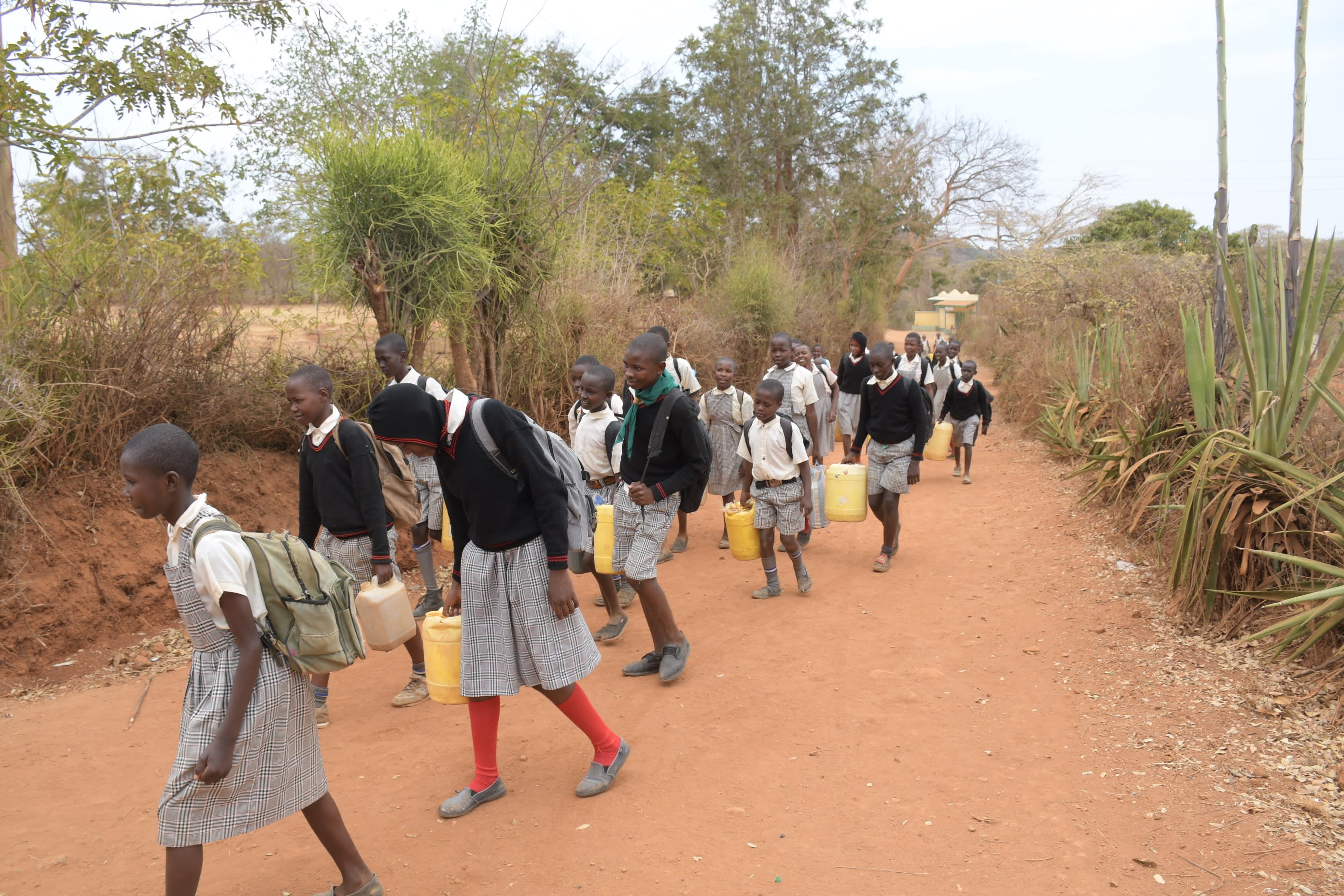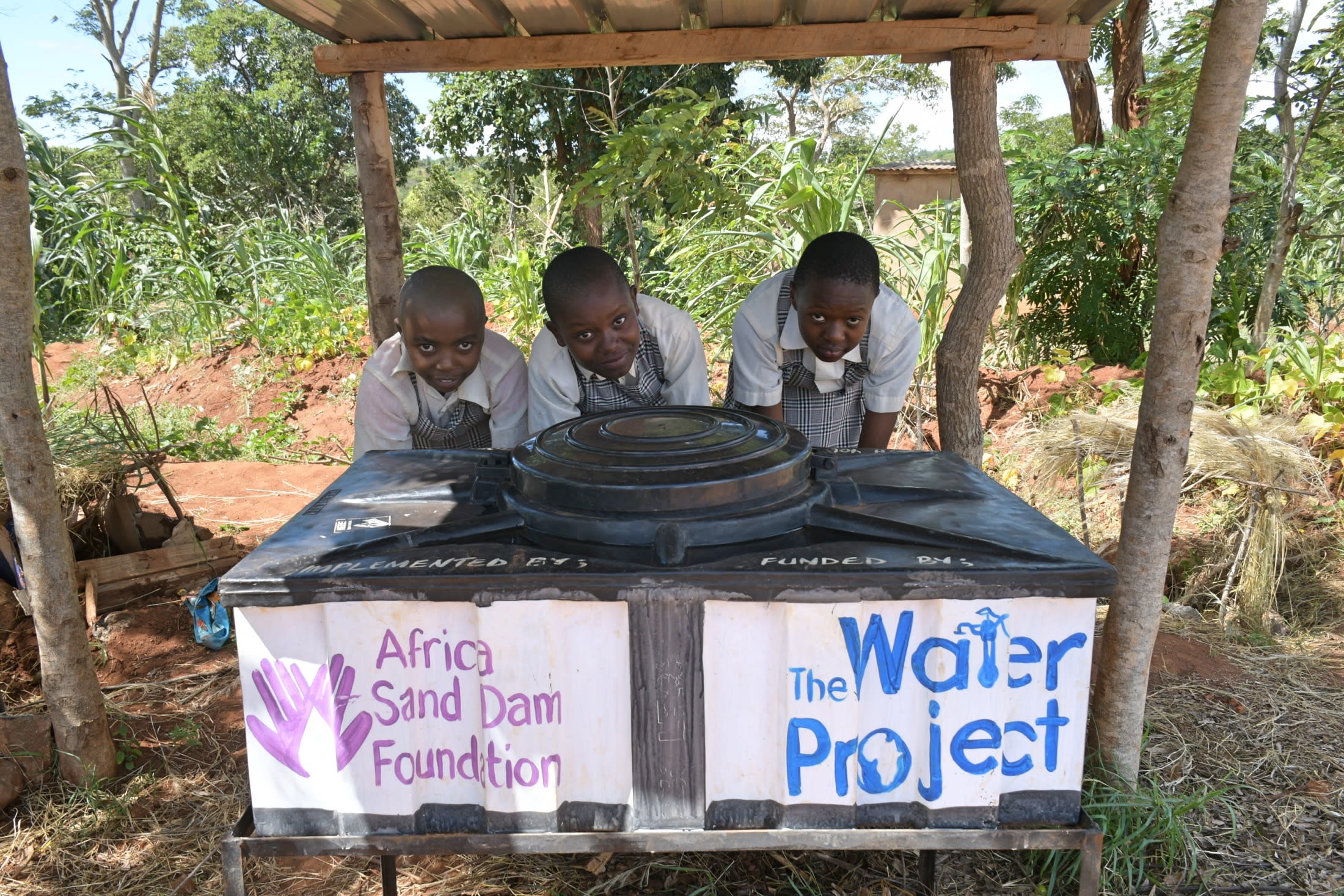With only one tiny 5,000-liter rain tank to serve all 288 students and 18 staff members at Kithaalani Primary School, the school has no choice but to buy water, crippling the school's development, making them sick, and keeping them dependent on an unreliable source.
"The current water tank in the school cannot hold enough water to sustain the school during the dry season, and it is also unreliable because some of the gutters have worn off and cannot harvest adequately," explained our field officer, Alex.
The water the school buys from water "boozers" (vendors) doesn't last very long since the school isn't able to buy much. When the water inevitably runs out, students have to carry water to school with them along with their books, which is especially taxing since water is also difficult to access for them at home. Some of the students must walk kilometers each way to the nearest river to fill their jerrycans on their way to school. When they don't bring enough water, they are sent home.

"I am often late to school, like today," said 15-year-old David M (pictured above). "The teacher had to send me back home for my parents to explain why I did not bring water to school."
This practice may sound harsh, but without water, it's impossible for the school to function. Water is needed to clean the classrooms and latrines, cook the students' lunch, provide irrigation for the agricultural students' projects, and, of course, to drink.
"Planting trees in the school is impossible, and getting water for agriculture is difficult because there is little water, and it has to be used sparingly," David explained. "Our latrines emit a foul smell because of the accumulated maggots, thanks to the water scarcity."
"I have not been able to achieve the target academic performance of the school because students have little water to drink and they are exhausted from carrying water to school," said the school's headteacher, Dominic Maluki.

"I also feel that teaching is affected by the poor hygiene and sanitation, absenteeism, and lateness," Dominic continued. "For instance, today, most of my students were absent because there was no water at home. The costly water expenses also drains our financial resources, and building more classrooms and other infrastructure is impossible because water has to be [rationed]."
Aside from its scarcity, the water the school can get is unsafe for consumption.
"According to the school headteacher, the students have often complained of stomachaches and stomach-related issues, which have later been diagnosed as amoeba, ringworms, dysentery, or typhoid," field officer Alex said.
Coupled with the lack of hygiene at the school, this water has the potential to spell disaster for the students and impact their health well into the future.
A large, reliable source of water on school grounds will go a long way to solving the debilitating issues faced by Kithaalani's students every day.
Rain Tank
We will build a 104,000-liter rain tank for this school, making the others look tiny in comparison. Because of how rarely it rains in Southeastern Kenya, this tank's large volume is designed to store as much water as possible during the seasonal rains, making more water available through the dry months. This water will benefit the students, teachers, and supplementary staff.
Parents will mobilize the materials needed for construction, including sand, stones, and water. They will also lend their strength and time to help with the construction. We will complement their materials with a skilled artisan to lead the project in addition to providing the tools, lumber, metal, cement, and gutter system.
As soon as the tank has time to cure, it can begin collecting rainwater for the school's use.
Training
We will train students and staff on sanitation, hygiene, and other topics for 1 day. Those in attendance will form a school health club that will promote good hygiene and sanitation practices both at school and at home. They will learn all of the steps to proper handwashing, how to treat water, and how to keep their environment clean. The school will also be taught how to best oversee and maintain their new rain tank and handwashing stations.
Handwashing Stations
A total of 3 handwashing stations will be installed upon the project’s completion and before training. These are 1,000-liter plastic tanks fitted with 3 taps each, allowing 9 students to wash their hands at once. The student health club and school management will be responsible for making sure the tanks are filled with water and that a cleaning agent such as soap or ash is always available.






 Rainwater Catchment
Rainwater Catchment
 Rehabilitation Project
Rehabilitation Project





























